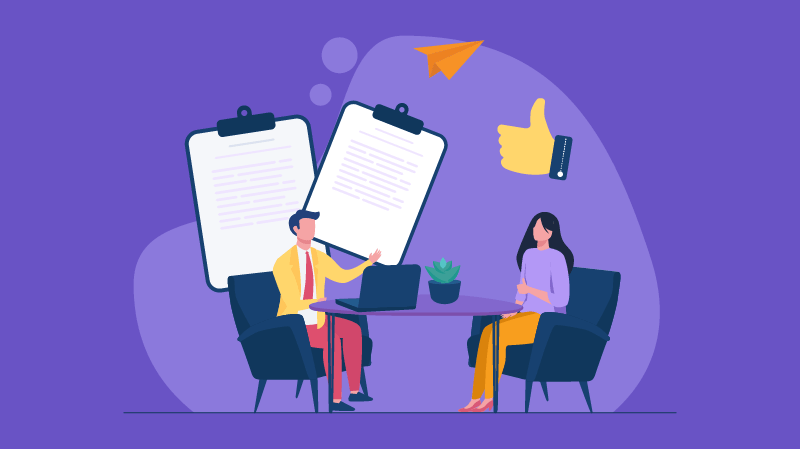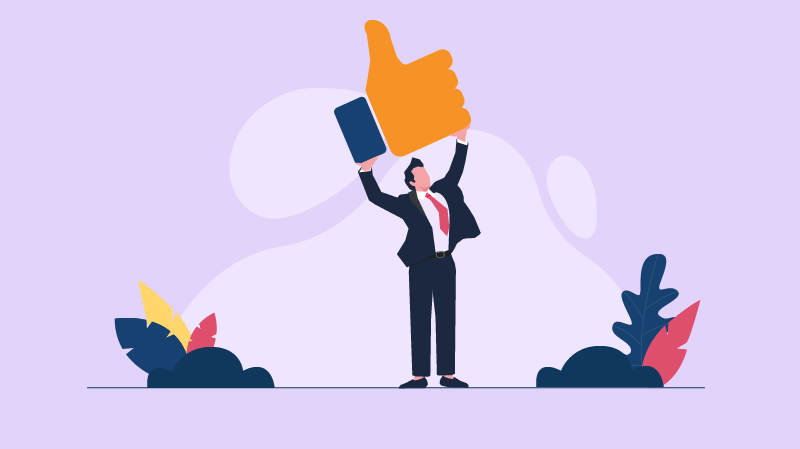6 Stages of Employee Lifecycle That You Need to Know
“An employee’s job is to give his or her best work every day. A manager’s job is to give the employee a good reason to come back to work tomorrow.” -Liz Ryan
Employee experience is a pivotal factor that significantly impacts employee satisfaction. Without satisfied employees, it is hard for employees to improve engagement. And it all starts with providing an excellent employee lifecycle for the employees.
The lifecycle starts as soon as an individual joins an organization. The whole process is focused on providing employees with the best possible experience in the workplace during their tenure.
But when you come to think of it, from where exactly does this lifecycle start? To understand how the it works, you first need to understand what exactly it is.
What is Employee Lifecycle?
The employee lifecycle is about the different stages that an employee goes through during their time at an organization. And every HR team needs to make the steps more beneficial for the employees.
Each stage of the employee lifecycle has its challenges, and every organization needs to make the process understandable.
A critical thing to keep in mind is that you need to invest more in the lifecycle process for better recruitment and retention. It's a gradual process, and it does take time. But you need to be persistent to make the system advanced and automated.
Now that you have an idea of the employee lifecycle let us delve into the different stages of the lifecycle.
Knowledge of ELC for HR Professionals and Managers
The employee lifecycle process is something that every HR professional and manager should have an understanding of.
Without prior knowledge of the subject, it will be difficult to execute the process and achieve the result.
Managers can receive professional training on the employee lifecycle and its impacting factors. Furthermore, HR professionals can work on organizing campaigns aimed specifically at raising awareness about the lifecycle process.
In the long run, the training will help the managers and HR leaders swiftly carry out the process.
Benefits of ELC in an Organization
An organization has numerous benefits from having a good employee lifecycle program. Some of the benefits include-
-
Smooth onboarding process and orientation.
-
Employees have a clear understanding of what is expected of them.
-
Higher levels of employee engagement and involvement.
-
Bridges the gap between the need for employee skills and training.
-
Enhances employee experience leading to higher levels of satisfaction.
Stages involved in ELC (Employee Lifecycle):
1. Attracting
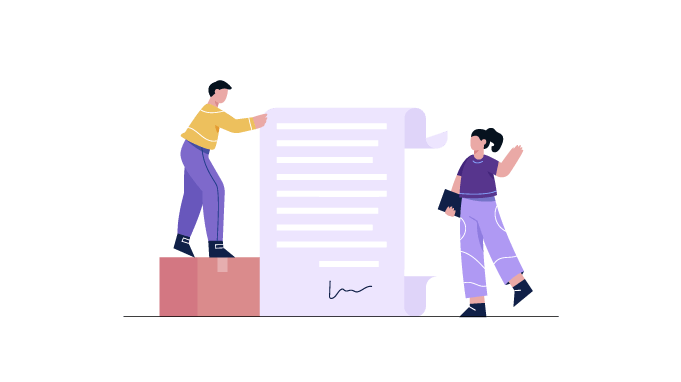
The first step that starts the process of the employee lifecycle is attracting. The corporate market has a vast pool of talents out there. And attracting candidates that can make a difference is critical.
To attract the best candidates, advertise the job opening alongside the organization's goals, objectives, and mission. This can begin with employee advocacy, an organization's referral programs, or any social media posts. However, you must ensure that you are posting about the right job to the right people and that your audience understands what you are looking for.
2. Recruitment
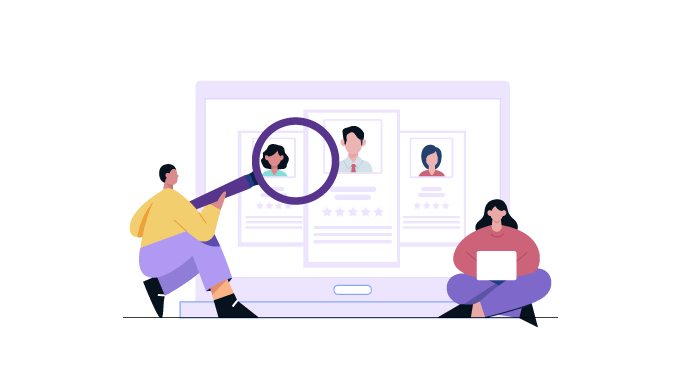
The second stage involves hiring the right people for the right job. Recruitment can be very draining for both the recruiter and the candidate. You need to have a good hiring strategy in your organization to make the most out of the recruitment process.

To conduct a good interview, you need to be specific and relevant about the job you offer. This will help you to choose the right candidate for the job and help you understand whether the candidate has understood the organization’s goals and objectives.
Also, make sure to provide the candidates with constructive feedback and criticism and criticism. And be prompt to carry with your hiring processes once the candidate is selected.
3. Orientation

After the recruitment process, it comes down to the next phase of the employee lifecycle- orientation and onboarding. During orientation, an employee is introduced to their new workplace, the company policies, the benefits of working in that organization and concentrating on building a good relationship with their peers.
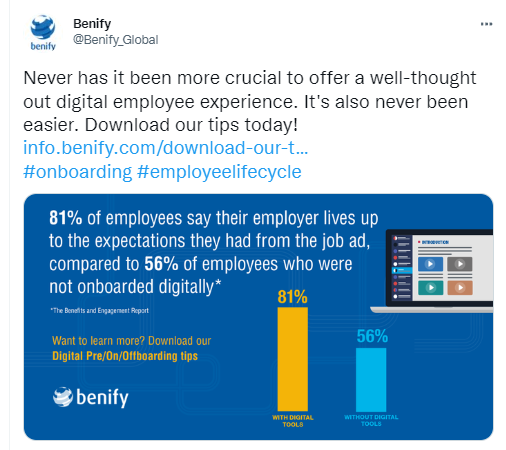
A smooth orientation process is essential for an employee to fit right in the organization. Not only will it ease up their anxiety, but it will also increase employee engagement.
4. Development

Employee development is another stage that happens during the employee life cycle. Employees are always looking for career growth and opportunities that will make them more proficient in their job. And with the new technological advancements on the rise, it has become necessary for everyone to keep up with the changes.
Employers can provide training and developmental programs to improve existing knowledge and skills. This way, they can expand their fields of knowledge and skillsets in various departments. Moreover, it allows them to continuously learn and grow throughout their tenure.
94% of employees believe they would stay with a firm for a longer period if they were involved in their learning and development. (Source: LinkedIn Learning, 2020)
5. Retention
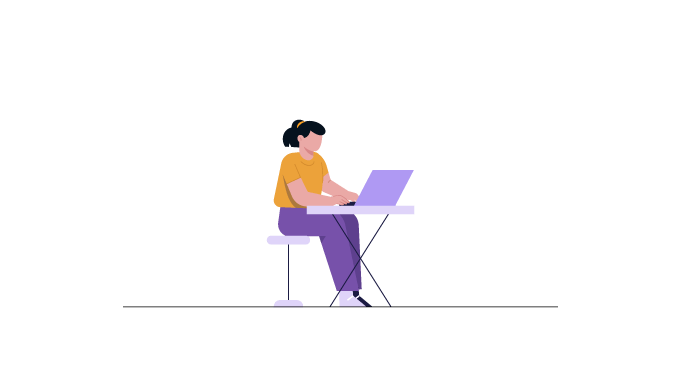
The employee retention stage is the fifth stage in the employee lifecycle. This is when employers focus on retaining their top and prized employees. Employers should keep in mind that their employees are happy with their job.
Employee turnover is the exact opposite of retention and often leads to high costs and a headache every organization tries to avoid in the long run. Company culture and the benefits you provide play a major role in employee retention.
Another important consideration when working to improve retention in your workplace is to create a transparent and open work environment. A positive company culture will always result in higher retention and satisfaction.
6. Offboarding

The final stage of this lifecycle ends when an employee leaves due to personal reasons, retirement, or a new job. It’s important that you keep your offboarding processes as strategic as your onboarding process.
When an employee leaves, it can affect certain team members, and it is up to the HR manager to keep everything on track. To keep fluency in the offboarding process, you can dig deep into why the employee resigned or ask for honest feedback. Just keep the process simple so that there is no panic within the organization and it does not disrupt the flow of work going on.
It’s a never-ending loop
Once an employee joins any organization, their job lifecycle starts. A lifecycle that begins with recruiting and ends with them leaving a company.
It always runs in a loop (no wonder it's called a cycle after all). When some employees leave, new ones join, and the cycle continues.
Moreover, the structure of the cycle is in such a way that every stage compliments each other.
And if there is one broken link in that cycle, it will be incomplete, and the program will not function well. E.g., after the recruitment process, employees have to go through a good onboarding program.
These programs help the employees to perform well, increasing productivity and morale. Thus, leading to low turnover and high retention.
So, it depends on the organization and the human resource department to make the employee cycle program run without any hiccups to make the most out of it.
Employee Life-Cycle FAQs
Q: What are the 6 stage employee life-cycle?
A: The Six stages include- Attracting, Recruitment, Orientation, Development, Retention, and Offboarding.
Q: What is an example of employee life-cycle?
A: A new employee's growth into an experienced leader is an example of the employee life-cycle. The stages of development that one must go through over time are an essential and important part of the life-cycle.
Q: What is an Employee life cycle model?
A: The employee life cycle model identifies and expresses the various and most important stages that an employee goes through as they interact with their company.
Q. What phase of the employee lifecycle is used to measure turnover rate?
A: The 'Retention Stage' of the employee life-cyle model is used to measure turnover rate.













